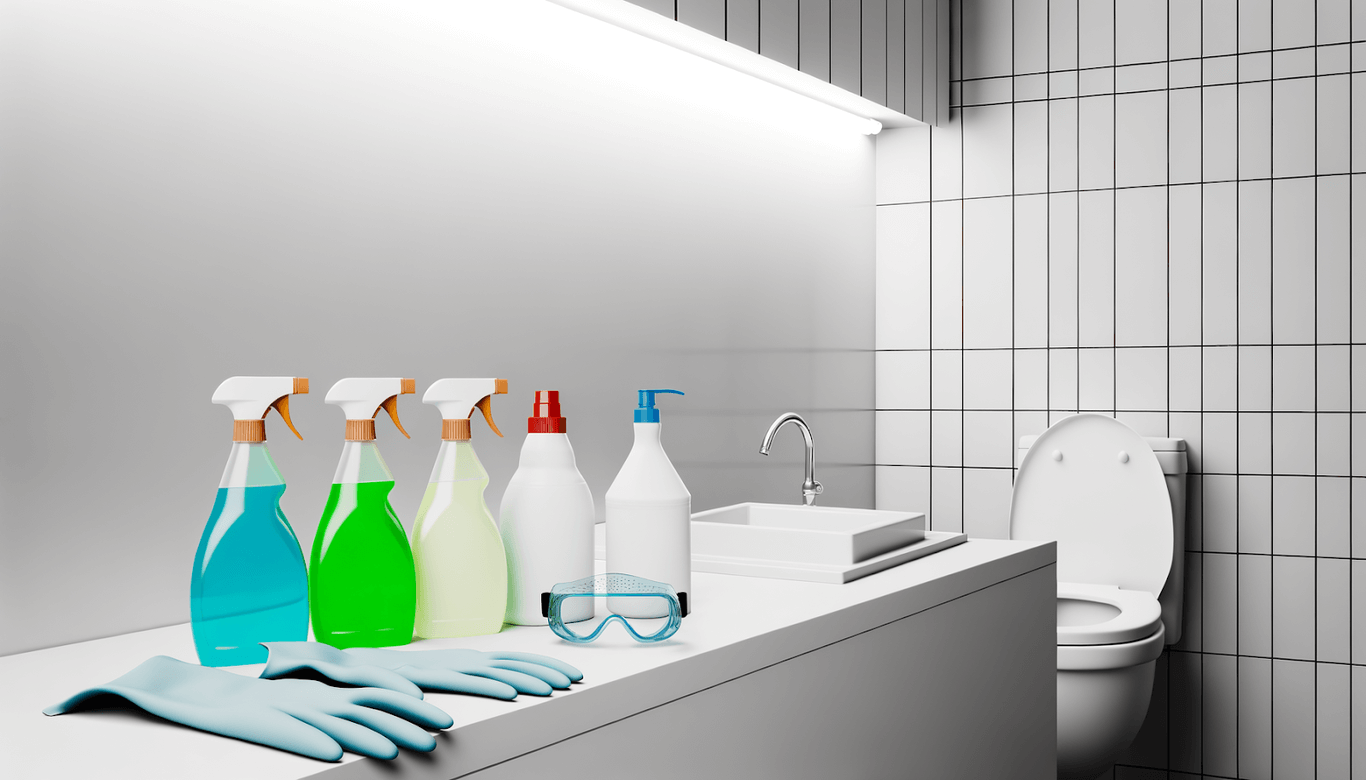
The Dos and Don’ts of Using Washroom Cleaning Chemicals
G'day, mate! Keeping our washrooms clean is more essential than we might give it credit for. After all, it’s not just about appearances; maintaining proper hygiene in washrooms safeguards our health. In this blog, we’ll delve into the specific details surrounding washroom cleaning chemicals, focusing on the crucial “dos and don’ts” to make sure you're cleaning effectively and safely. Let's get cracking!
Understanding Washroom Cleaning Chemicals
Cleaning chemicals are specialised formulations designed to tackle the dirt and grime found in washrooms. This includes products with surfactants, builders, acids, solvents, and various additives. Let's break down what each of these components does.
Types of Washroom Cleaning Chemicals
1. Surfactants
Surfactants help water spread over a surface more effectively, removing soils and stains. You’ll typically find these in concentrations between 1-5% in washroom cleaning products. Surfactants come in three varieties: anionic, non-ionic, and cationic.
2. Builders
Builders enhance the effectiveness of surfactants and are crucial for softening water and removing mineral deposits. They can be present up to 10% in some spray formulations.
3. Acids
If you’ve dealt with soap scum or mineral deposits, acids like citric acid come to the rescue. They've a cleaning punch of between 1-5% in concentration, helping fight inorganic stains.
4. Solvents
Solvents like isopropanol kick grease to the curb, making them indispensable for breaking down tough stains. They could be up to 15% in liquid solutions.
5. Additives
These are the extras that make your cleaning experience pleasant – think fragrances and dyes, plus thickening agents for that perfect consistency.
Essential Safety Tips for Using Cleaning Chemicals
1. Ventilation and Protective Gear
Any time you’re using these potent cleaning agents, ensure proper ventilation. Open windows, use your exhaust fan, and suit up in your protective gear. This means gloves for your hands, goggles for your eyes, and a mask to shield your respiratory system.
2. Avoid Mixing Chemicals
Whatever you do, avoid mixing different chemicals. Have you ever heard about those nasty reactions between bleach and ammonia? Yeah, that could land a bloke in hospital. Stick to using chemicals as they are.
3. Follow Instructions
Seems obvious, but you’d be surprised. Always stick to the instructions on the label. Too much or too little of a product affects its efficiency and can pose dangers.
4. Proper Storage and Disposal
Mind where you store your cleaning supplies - away from both kids and pets is key. When it’s time to dispose of them, follow the directions on the packaging to avoid any environmental harm.
Common Chemicals and Their Uses
Bleach
Bleach is a powerful disinfectant perfect against stubborn germs and proteins. But it's a no-go for mixing with, say, vinegar – unless you enjoy toxic fumes.
Ammonia
Finding your glass and mirrors smeared every which way? Ammonia is excellent for bringing back their sheen. But watch out around surfaces like laminate – it’s better used elsewhere.
Hydrochloric Acid
Toilet in need of a good cleaning? Hydrochloric acid works wonders against limescale and rust, especially on tiles and grout. Use with care, though – this stuff is corrosive.
Step-by-Step Guide to Safe Chemical Use
1. Preparation
- Ventilate the area.
- Remove items that could be damaged.
- Wear gloves, goggles, and a mask.
2. Application
- Follow dilution instructions for liquid cleaners.
- Spray cleaners should evenly coat surfaces.
- For hydrochloric acid, ensure even coverage with a brush.
3. Allow to Sit
Give it time – the cleaning solution generally needs to break down nasties, usually 5-10 minutes with hydrochloric acid.
4. Scrubbing and Rinsing
- Scrub vigorously for stubborn spots.
- Rinse thoroughly to clear away residue.
Best Practices for a Spotless Washroom
1. Read Labels Carefully
Labels are there for a reason. They contain the vital info you need about safe and effective usage.
2. Test on a Small Area
Avoid turning washroom surfaces into guinea pigs. Test chemicals in inconspicuous spots at first.
3. Use the Right Tools
Whether it's brushes or cloths, having the right tool can make a world of difference in cleaning effectiveness.
4. Clean Regularly
Regular maintenance makes cleaning less of a project down the line, keeping those deposits from building up.
5. Dispose of Properly
Don’t just tip unused solutions down the sink. Follow the disposal instructions to safeguard the environment.
By understanding the ins and outs of washroom cleaning chemicals and adhering to these guidelines, you'll be ahead in maintaining a clean, hygienic, and safe washroom space. Remember, safety and effectiveness should always be top of mind when tackling those essential cleaning tasks. Cheers!
